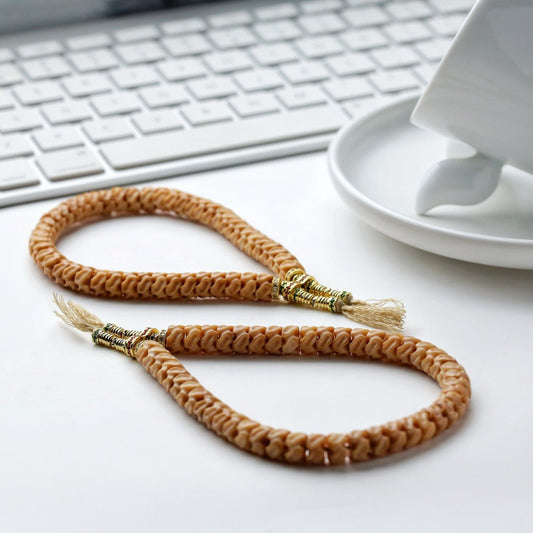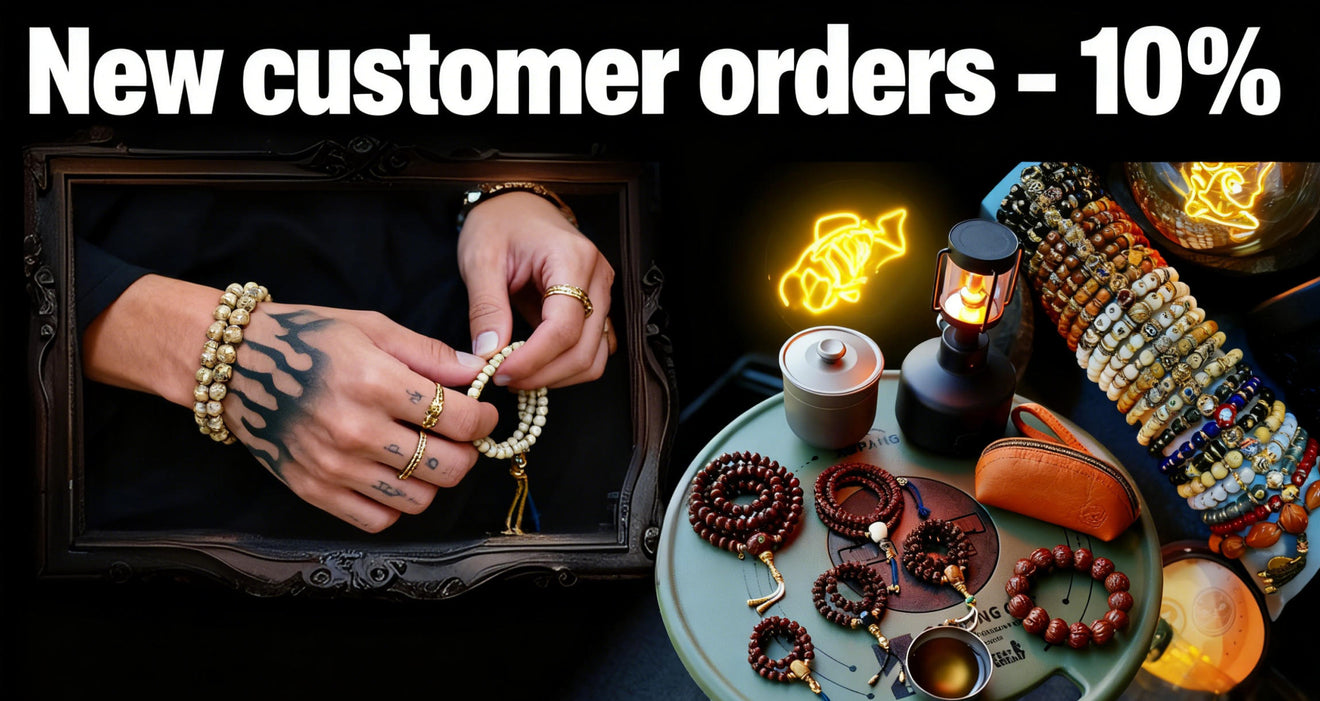
Inside the elaborate weave inside Tibetan faith systems are found two profound relics: the detailed thangka and symbolic bodhi ornament. All individually, in distinct form, function to connect with higher wisdom. The thangka, a colorful canvas, shows holy beings, mystical shapes, or doctrinal episodes, providing insight for inner reflection.
Meanwhile, the bodhi bead, often crafted from valuable jewels, planks, seeds, or ossein, is a tangible reminder of Buddha's illumination under the bodhi tree. Handling the beads deepens focused awareness.
- Mutually, the thangka and the bodhi bead represent the path to liberation. They offer a tangible link to the age-old knowledge of Tibetan Buddhism.
Legends Echoed from Camel Remains
Spanning bygone centuries, historic treasures whisper tales about a world long passed. These are not luxurious objects originating in bygone empires, but humble camel bones sculpted with inscriptions that hold the arcana of a bygone epoch. Each bone holds the echo sprung from a life lived, a journey completed, and a connection to the old wisdom containing which encompasses us all.
- Such objects
- Relics
- Are
Interpreting the Visual Narratives of Thangka
Tangkas are radiant paintings on canvas, meticulously crafted by Tibetan artists to depict consecrated figures and scenes from Buddhist literature. Each detail within a thangka is laden with interpretation, forming a complex tapestry of visual narratives that guide the viewer on a spiritual journey. The shades used in thangkas are not merely aesthetic choices but carry fundamental connotations, representing different aspects of the Buddhist doctrine. From the peaceful figures to the intricate layouts, thangkas offer a window into the rich world of Tibetan Buddhism, inviting us to ponder upon its understanding.
- Traditional thangka art often depicts key Buddhist figures such as Buddha Shakyamuni, Bodhisattvas like Avalokiteshvara and Manjushri, and enlightened beings from various sects of Tibetan Buddhism.
- Across these representations lies a wealth of learnedness that can be unlocked by those who explore the symbolic language of thangkas.
Awakened One's Path to Enlightenment: Embodied in Beads and Bone
Upon the winding track to transcendence, the Buddha exercised symbols imbued with profound meaning. These bead and relic held within them the core of his doctrine, disclosing glimpses into the unfolding of reality. Via their contour, the Buddha conveyed profound realizations that surpass the realm of ordinary perception.
From chosen sacred beads, crafted from unique materials, spread vibrations that matched with the delicate currents within. The bone of a being, meticulously transformed into relics, served as tangible signals of the impermanence native to all forms.
Thangkas: Windows into Himalayan Spirituality
Thangkas luminous paintings on cloth serve as effective representations of Himalayan spirituality. These intricate works of art, meticulously created with finest brushstrokes, depict a vast array upon Buddhist deities, mandalas, and scenes from historic scriptures. Each thangka is a visual guide for meditation and contemplation, offering discernment into the profound teachings of Buddhism.
- They are often used in ritual ceremonies for
- expressing states of spiritual illumination.
- Thangkas are not merely decorative elements but rather windows into the rich and spellbinding world of Himalayan spiritual traditions.
Bodhi Beads: Embracing Mindfulness and Cultivating Compassion
Each jewel on a bodhi bead mala whispers tales of ancient wisdom, guiding us on a odyssey through the tranquil waters of mindfulness. As we hold these intricately created beads, our fingers trace the contours of unique one, anchoring our attention in the present moment. The gentle heft of the beads against our palms serves as a tangible reminder to take in air, fostering a sense of composure.
- Every time bead that passes between our fingers, we grow compassion, extending it first to ourselves and then outward to the world.
- Eastern religions teaches us that mindfulness is a skill that requires patience and persistence.
By the use of the rhythmic repetition of mantra or simply the mindful tallying of the beads, we escape from the relentless chatter of the mind.
The practice making use of bodhi beads is a gentle invitation to revive our connection with ourselves and the world around us.
Soulful Creation: Camel Bone Bracelets Enhancing Spiritual Progress
Intent embodies an inherent energy in our lives, shaping our experiences and guiding us towards our foreordained route. When we combine this intention with the primordial insights of crafting a camel bone bracelet, we create a potent synergy that can expedite our spiritual growth.Camel bone remains deeply resonant, representing resilience. Its natural beauty and unassuming elegance serve as a constant reminder of the sacred potential within each of us.Once bones are chosen with care, flow affirmations into the bracelet. With every knot or join, we embody our hopes, dreams, and aspirations for spiritual evolution. This act of creation becomes a meditative practice, blending us with our inner wisdom and guiding us on a exploration of consciousness.- Match the bone’s tones to your aspirational themes.
- Picture your goals interlaced in the bracelet’s form.
- Expose it to elements to empower its sacred presence.
The Fascinating Story of Camel Bone in Buddhism
In the rich tapestry throughout Buddhist tradition, artifacts often hold profound symbolic meaning. Amidst these varied objects, camel bone stands out as a unique and intriguing element. Within history, this material has been applied in the crafting through various Buddhist implements, each imbued with specific meanings.
- Regarded as a symbol of resilience and strength due to the camel's ability to persist in harsh environments, camel bone often reflects spiritual fortitude.
- Coupled with, the color and texture relative to camel bone are believed to some to hold auspicious connotations, reflecting purity and serenity.
Therefore, camel bone has become a treasured part of Buddhist legacy, serving as a tangible bridge to the profound teachings contained in this ancient faith.
Thangka Compositions: Acts of Holiness
Within the ethereal realm of Tibetan Buddhism, Thangka paintings emerge as sacred portals to enlightenment. These breathtaking works, meticulously crafted by skilled artists known as thangkapa, depict a myriad embracing vibrant deities, celestial beings, and mythical creatures. Each brushstroke saturates profound spiritual significance, narrating ancient tales and philosophical doctrines.
- Covering a vast collection of Buddhist iconography, Thangkas serve as both devotional objects and instructional tools. Faithful practitioners gaze upon these paintings during rituals and meditations, seeking to cultivate spiritual wisdom.
- Adorned with intricate details and vibrant hues, Thangkas are considered windows into the divine. Each individual painting acts as a symbolic representation of the Sage's teachings and the path to liberation.
Via their potent imagery and symbolism, Thangka paintings offer a glimpse into the rich doctrinal traditions of Tibet. They are a testament to the enduring beauty of Tibetan art and its profound ability to empower.
Embracing the Duality: Thangkas and the Cycle of Life and Death
Thangkas, lively crafted Tibetan hangings, communicate a serious study of existence’s temporality. Each intricate illustration depicts deities and beings engaged in the progressive venture of life and death, a panorama of birth, growth, impermanence, and reawakening. The artists skillfully interlace these concepts within the thangka's universe, highlighting the correlation of all things. Through vivid symbols, they invite us to ponder on Tibetan-style prayer beads our own life. The cycle returns, a pattern of coming and going, stressing the preciousness of each moment. By embracing this duality, thangkas teach us to value the beauty in both life's joys and sorrows.String of Mindfulness: The Significance of Bracelets in Buddhist Practice
In the intricate tapestry of Buddhist practice, seemingly humble objects often hold profound meaning. Among these are bracelets, which serve as tangible signs of devotion and commitment to the principle of Buddha. Worn on the wrist, a bracelet behaves as a constant reminder of one's aspirations and objectives. It can mirror the impermanence of life, encouraging practitioners to remain grounded in the present moment. Some bracelets may incorporate sacred characters, such as mantras or the names of Buddhas, which are thought to channel positive energy and safety. Others can be made from substances with spiritual significance, like sandalwood or lotus seeds, enhancing the bracelet's influence. Ultimately, the significance of a Buddhist bracelet lies far beyond its physical form. It becomes a powerful tool for introspection, a stimulus to live in harmony with the teachings of Buddha, and a expression of one's unwavering confidence.